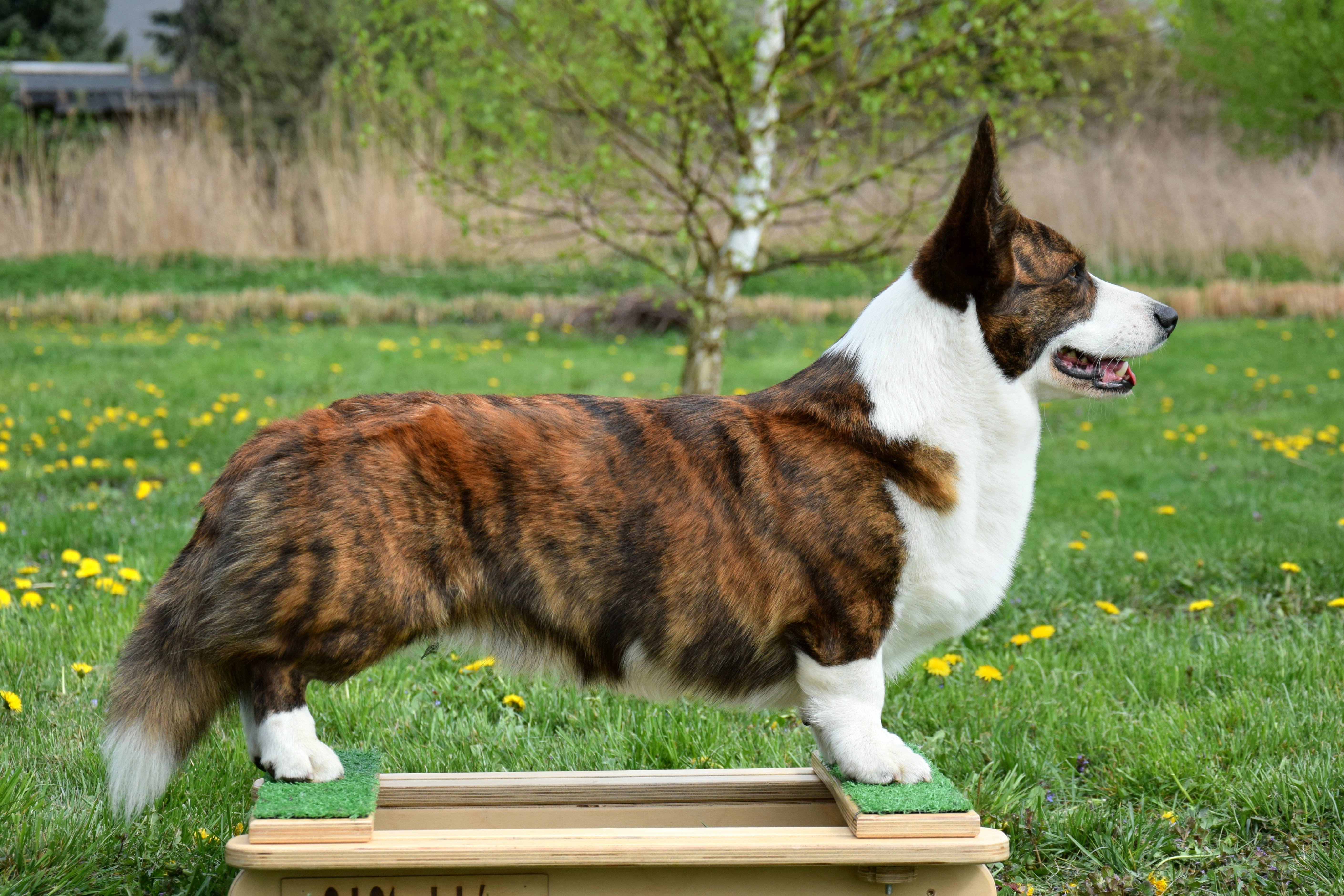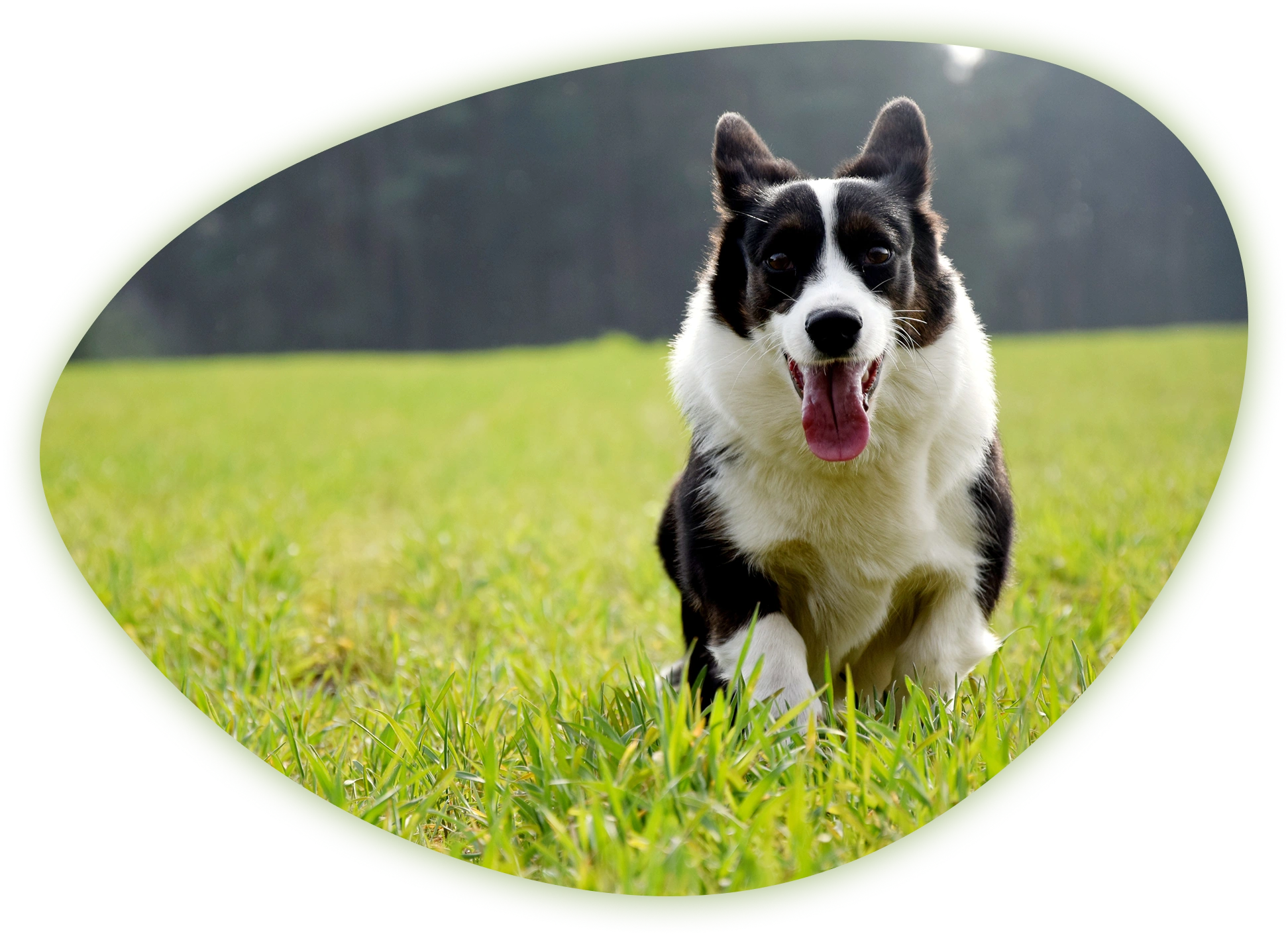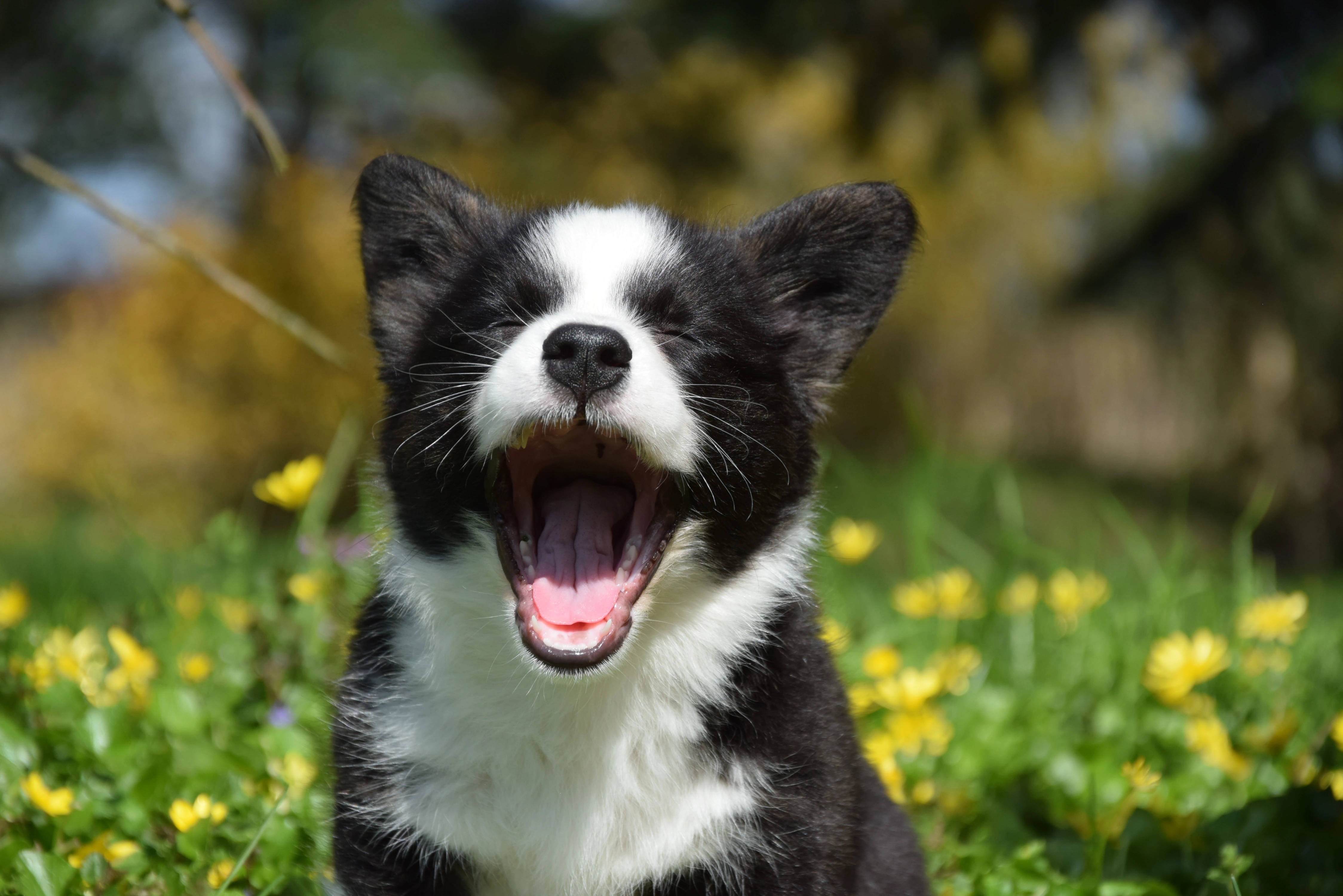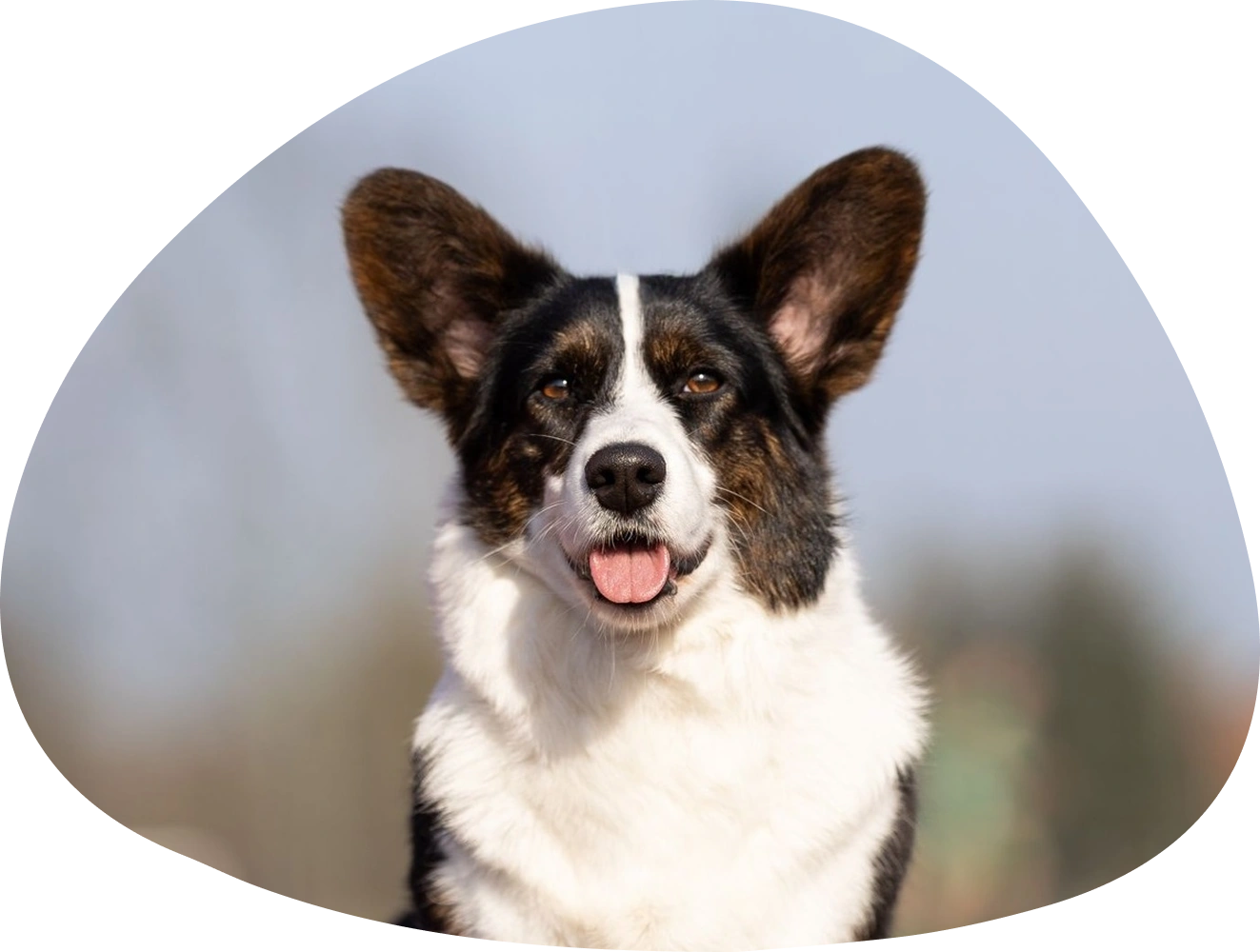
According to Welsh legend, the Welsh Corgi Cardigan was gifted to humans by… fairies! The story goes that many years ago, two children walking through the Welsh countryside discovered a pair of small puppies in the forest. At first, they thought they were fox cubs, but soon noticed there was something special about them. They brought them home, and their parents — shepherds — recognized that these were no ordinary dogs, but a precious gift from the fairies.
The parents told the children that these lively little dogs once served the woodland folk as steeds, pulling their chariots through the forest. The magical saddle-shaped markings on their backs and the white pattern on their necks were said to be traces of fairy harnesses and reins.
While the legend is enchanting, the breed’s actual history is a bit more down to earth. The Welsh Corgi Cardigan is one of Britain’s oldest herding breeds. Its ancestors are believed to have arrived in Wales with the Celts around 3,000 years ago, and modern research suggests they share lineage with dachshund-type dogs. Whether you prefer folklore or history, there’s no denying the charm of this remarkable breed.
The Welsh Corgi Cardigan is an intelligent, loyal, and energetic dog. Despite their short stature, these dogs have plenty of courage and personality. Originally bred for herding cattle, they have retained a strong herding instinct to this day.
They are deeply devoted to their families. Cardigans are active, hardy dogs who love spending time outdoors and make excellent companions for people with an active lifestyle. They excel in dog sports such as agility and obedience, but they’re just as happy curling up on the sofa after a busy day.
Corgis are quick learners and eager to please, but also famously stubborn. Early, consistent, and positive training is essential to bring out their best.

The Welsh Corgi Cardigan is generally a healthy and resilient breed. A balanced diet and regular exercise are key to preventing obesity and spinal issues, to which the breed is predisposed. With their big hearts and lively spirits, Cardigans make wonderful companions for those seeking a devoted, adventurous partner in everyday life.
FCI BREED STANDARD
Although generally healthy, the Welsh Corgi Cardigan has some genetic predispositions, mainly related to its distinctive structure — a long body and short legs. This chondrodystrophic build increases the risk of spinal problems. The most common include:
This is the most common spinal disorder in chondrodystrophic breeds (dogs with short legs and long backs, such as Corgis). In simple terms, it involves the degeneration of the intervertebral discs, which act as cushions between the vertebrae.
Mechanism: Over time, in genetically predisposed dogs, the disc’s nucleus pulposus loses elasticity and hardens. The surrounding annulus fibrosus can then rupture, causing the disc material to protrude or herniate into the spinal canal. This puts pressure on the spinal cord, leading to pain and neurological symptoms.
Symptoms:
The onset can be sudden and very painful. Typical signs include:
- Pain (the dog may yelp when touched or avoid contact)
- Stiff gait
- Lameness or weakness in the hind limbs
- Difficulty rising or climbing stairs
In severe cases: paralysis and loss of bladder or bowel control.
Treatment: The approach depends on the severity. Mild cases may respond to conservative treatment such as anti-inflammatory medication and strict crate rest. More serious cases may require surgical intervention to relieve spinal cord compression.
DM is a progressive, incurable neurological disease that causes degeneration of the spinal cord. Although more commonly associated with the Pembroke Welsh Corgi, it can also affect Cardigans.
Mechanism: The disease progresses slowly and painlessly, gradually causing loss of coordination and control in the hind limbs.
Symptoms: Early signs may include slight loss of balance and crossing of the hind legs while walking. Over time, weakness increases, eventually leading to paralysis.
Treatment: There is currently no cure for DM. Supportive care through physiotherapy is key — it helps maintain muscle strength, slows progression, and improves quality of life.
Spondylosis deformans is a degenerative spinal condition in which bony growths (osteophytes) form along the edges of the vertebrae.
Mechanism: These changes develop as part of the natural aging process of the spine. In the early stages, they usually don’t cause symptoms. In more advanced stages, the bone spurs can form “bridges” that stiffen the spine and may compress nearby nerves.
Symptoms: Stiffness, pain, reluctance to jump or run, and difficulty rising.
Treatment: Spondylosis cannot be cured. Treatment focuses on pain management (anti-inflammatory and pain-relief medications), slowing disease progression (joint supplements), and improving mobility through physiotherapy.
1. Avoid excessive strain: Prevent your dog from jumping off furniture, stairs, or cars. Consider using ramps to reduce impact on the spine.
2. Maintain a healthy weight: Excess weight puts significant strain on the spine and joints. A balanced diet and regular activity are essential.
3. Provide appropriate exercise: Replace high-impact jumps or sudden bursts with regular walks, swimming, and core-strengthening activities.
4. Choose a responsible breeder: Make sure your breeder performs genetic testing for common conditions, such as DM, to minimize health risks.
5. Early diagnosis: If you notice signs of pain, stiffness, or mobility issues, consult your veterinarian promptly — ideally one who specializes in orthopedics or neurology.
Grooming a Welsh Corgi Cardigan is relatively straightforward.
Cardigans have a double coat — a dense undercoat and a coarse outer layer — which is naturally adapted to harsh weather conditions. Despite its abundance, the coat is not difficult to maintain with regular care.

Frequency: Brushing once every few days (e.g., once a week) is usually enough to remove dead hair and keep the coat healthy.
Shedding: Cardigans shed heavily twice a year, most often in spring when they lose their winter undercoat. During this time, daily brushing is recommended to speed up coat change and minimize loose hair around the house.
Tools: A slicker brush and a medium-density metal comb work best for regular grooming. During shedding season, some owners use special de-shedding tools — but these should be used carefully and sparingly to avoid damaging the outer coat.
Frequency: Bathe your dog as needed (e.g., when dirty or smelly), typically 3–4 times a year. Overbathing can strip the coat and skin of their natural protective oils.
Products: Use high-quality dog shampoos suited to your dog’s coat type or needs (e.g., moisturizing shampoo). After rinsing the shampoo, apply a conditioner to nourish the coat and make brushing easier.
Drying: Cardigan coats take a while to dry. Towel dry thoroughly, then use a blow dryer on a cool or lukewarm setting while brushing through the coat to ensure even drying.
Cardigans are prone to dental issues and tartar build-up.
Brushing: Regular tooth brushing (daily or at least several times a week) with dog-specific toothpaste and a soft toothbrush is the most effective way to maintain oral health.
Check-ups: Schedule regular dental check-ups with your veterinarian to catch any problems early.
Trim your dog’s nails regularly if they do not wear down naturally — which is common in urban environments. Use proper dog nail clippers. Overgrown nails can cause discomfort and joint problems.
Trim the hair that grows between the paw pads and underneath the feet to keep them clean and tidy.
Grooming a Welsh Corgi Cardigan mainly comes down to regular brushing during shedding seasons and consistent dental care. With basic maintenance, their coat stays healthy and beautiful, and your dog remains comfortable year-round.